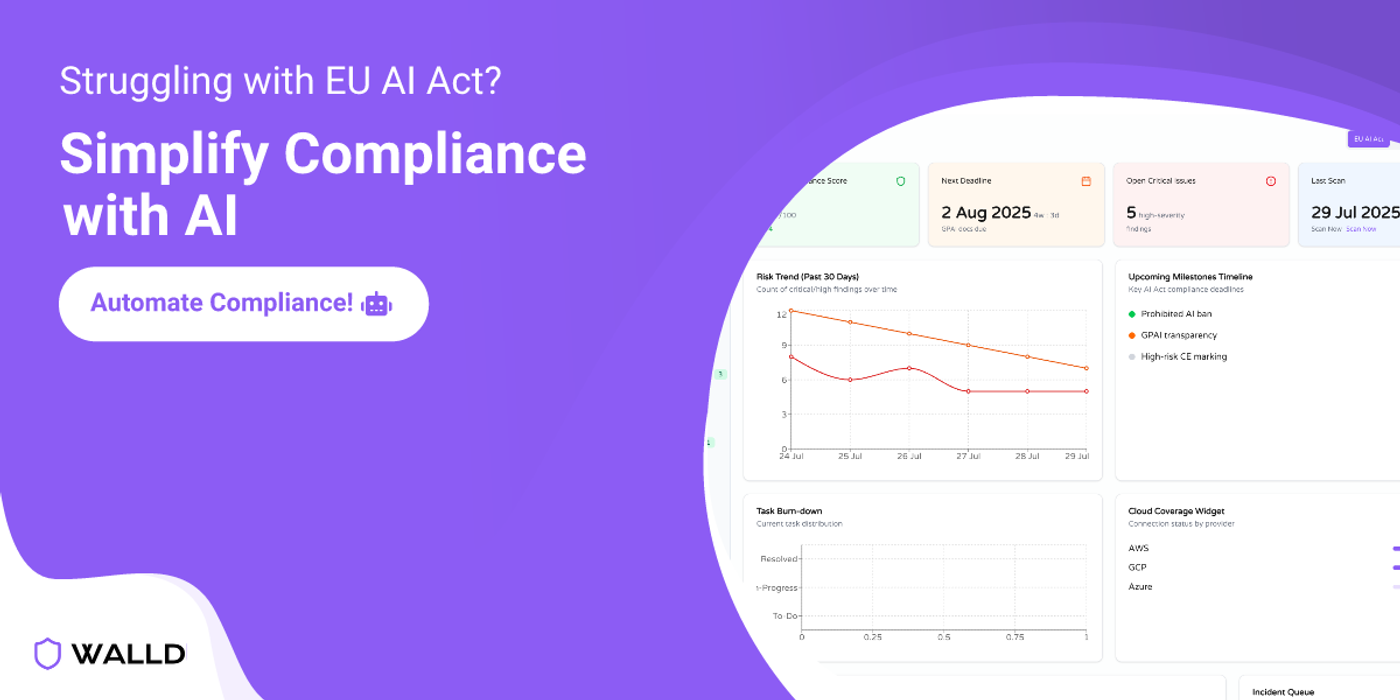EU AI Act vs. GDPR vs. CCPA: Key Differences in AI Compliance
Compare the EU AI Act, GDPR, and CCPA for AI compliance. See how they differ in scope, focus, obligations, and penalties—and where AI products must meet all three.

The regulatory landscape for artificial intelligence and data privacy is evolving fast. Businesses that build or use AI now face a patchwork of rules—with the EU AI Act, the General Data Protection Regulation (GDPR), and the California Consumer Privacy Act (CCPA) at the top of the list.
While these laws overlap in spirit—protecting rights, ensuring transparency, and managing risk—they apply in different ways, to different scopes, and with different penalties. Understanding where they intersect and where they diverge is key to avoiding compliance blind spots.
1. Scope: What (and who) they regulate
The EU AI Act is product-safety-style legislation for AI systems placed on or used in the EU market. It applies regardless of where the provider is located—if your AI reaches EU users, you’re in scope. Its focus is on risk-based obligations for AI, from prohibitions on certain uses to high-risk system governance.
GDPR applies to personal data processing, meaning any information relating to an identified or identifiable person. It covers EU-based controllers and processors, and non-EU organizations that target EU residents or monitor their behavior. AI comes into play when it processes personal data.
CCPA (as amended by CPRA) applies to certain for-profit businesses doing business in California that meet thresholds around revenue, personal data volume, or sale/sharing of personal data. Its focus is on consumer privacy rights, not AI system safety.
2. Regulatory focus
- EU AI Act: Trustworthiness, safety, risk management, and transparency for AI systems themselves. Think model behavior, human oversight, accuracy, robustness, and compliance with specific prohibited and high-risk use rules.
- GDPR: Lawful, fair, and transparent processing of personal data. It regulates how data is collected, stored, and used—AI or no AI.
- CCPA: Consumer control over personal data—disclosure, deletion, opt-out of sales/sharing, and non-discrimination.
3. Risk vs. rights-based approach
The EU AI Act uses a risk-tiered framework:
- Prohibited risk: Completely banned uses (e.g., manipulative AI harming vulnerable groups, social scoring by governments).
- High risk: Stringent requirements before market entry, including conformity assessments, technical documentation, and post-market monitoring.
- Limited risk: Transparency obligations (e.g., disclosing chatbots or deepfake content).
- Minimal risk: No specific obligations.
GDPR and CCPA are rights-based, focusing on data subjects’ rights (access, deletion, portability, objection) and obligations on controllers/processors to respect them. They don’t classify AI systems by “risk” but can indirectly limit certain AI uses through consent and fairness requirements.
4. Transparency obligations
The EU AI Act demands transparency around AI interaction: users must be informed when they are interacting with AI, when content is AI-generated or manipulated, or when biometric/emotion recognition is in play.
GDPR transparency is about data processing: who’s processing the data, why, how long, and with whom it’s shared.
CCPA transparency focuses on consumer notices: what personal data categories are collected, purposes, and rights to opt-out of sale or sharing.
5. Enforcement and penalties
- EU AI Act: Administrative fines up to €35 million or 7% of global annual turnover for prohibited uses, and smaller (but still serious) penalties for other infringements.
- GDPR: Fines up to €20 million or 4% of global annual turnover.
- CCPA: Civil penalties up to $7,500 per intentional violation, enforced by the California Attorney General and California Privacy Protection Agency; also provides a private right of action for certain data breaches.
6. Overlap: When AI touches personal data
If your AI system processes personal data in the EU, both the AI Act and GDPR will apply—meaning you must meet technical safety and governance requirements and data protection principles.
For California, if your AI collects or processes personal data from California residents, you’ll need to meet CCPA obligations alongside any AI-specific governance you voluntarily adopt or that comes via contracts.
7. Practical compliance strategy
- Map your systems and data flows to understand which regulations apply.
- For EU-bound AI products, run both an AI risk classification and a GDPR data protection impact assessment (DPIA) where personal data is involved.
- For California, align your privacy notices and rights-handling workflows with CCPA, and ensure your vendors/contracts reflect these obligations.
- Build integrated compliance: don’t run separate “AI Act” and “GDPR/CCPA” silos—combine oversight, documentation, and governance where possible.
The bottom line
The EU AI Act, GDPR, and CCPA aren’t interchangeable—they each target different risks and rights. But for AI products that process personal data and reach across jurisdictions, you’ll often have to comply with all three.
The smartest move is to treat them as a single governance challenge: safe, transparent, rights-respecting AI systems backed by strong documentation and oversight. That approach won’t just keep you out of legal trouble—it will also make your AI more trustworthy to users and partners.
Where WALLD fits
WALLD automates the busywork: building your AI system inventory, mapping provider/deployer obligations, generating Annex IV-ready technical documentation, collecting evidence for conformity assessments, and running post-market monitoring workflows. That way, engineering and legal teams spend time on design decisions—not wrangling spreadsheets and versioned PDFs.
Disclaimer: This article is for general information and is not legal advice. Always consult qualified counsel for your specific situation.